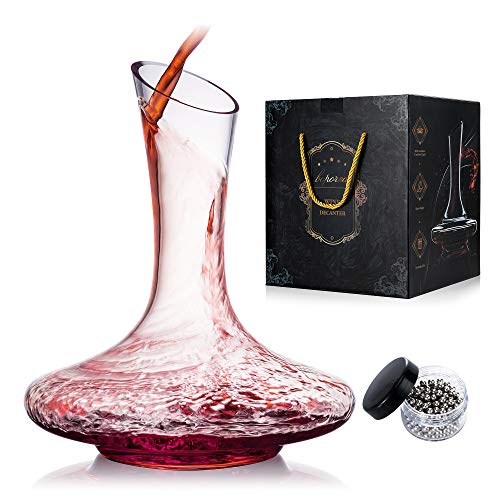Dive deep in the Duoro Valley of Portugal and you’ll discover a delectable nectar: Vintage Port wine. But what is it?
Vintage Port is a Portuguese fortified red wine made from a single, exceptional year. Made from a blend of red grapes, the wine spends no more than 2 years in barrel before bottling. Vintage Ports improve in the bottle and can age for decades. Many consider Vintage Port wines a must-have to complete a wine cellar.
- What Determines Vintage in Port?
- What is Vintage vs. Non-vintage Port?
- Is Vintage Port Wine the Same as Tawny Port?
- Is Tawny or Vintage Port Better?
- Is Vintage Port Drinkable?
- What Year Is Good for a Vintage Port?
- Does Vintage Port Get Better with Age?
- Why Is Vintage Port So Expensive?
- Does Vintage Port Need to Breathe?
- Should Vintage Port be Decanted?
- What Color Should Vintage Port Be?
- How Long Will Vintage Port Keep?
- Should Vintage Port be Stored on its Side?
- Can You Drink 50-Year-Old Port?
- How Do You Drink Vintage Port?
- Does Vintage Port Go Up in Value?
- What Goes Best with Vintage Port?
- Does Vintage Port Improve in the Bottle?
- Final Thoughts – How to Drink Vintage Port
- Thirsty for More?
What Determines Vintage in Port?

Each producer determines (declares) a vintage. Because Vintage Ports last for decades, these need to be high-quality wines.
Grape quality, weather conditions, tasting panels, consistency, and reputation all play a role in determining a Vintage Port.
The Port houses and regulatory bodies in the Douro region of Portugal rely on several factors when declaring a vintage:
- Grape Quality: The quality of the grapes is of utmost importance in declaring a vintage. Port houses carefully assess the ripeness, sugar levels, acidity, and overall health of the grapes before deciding if the year meets the criteria for a declared vintage.
- Weather Conditions: The weather during the growing season plays a significant role in determining the vintage. Ideal conditions include a warm and dry summer, allowing the grapes to ripen fully and develop concentrated flavors. Adverse weather, such as excessive rain or heat, can negatively impact grape quality and potentially lead to a non-declared vintage.If you follow wine news, you’ll often see growers discussing the potential of a vintage throughout the late summer and fall.
- Tasting and Evaluation: The port houses conduct extensive tastings and evaluations of the wines from the harvest. Expert tasters assess the wines’ characteristics, aging potential, and overall quality to determine if they meet the standards required for a declared vintage. The Port regulatory body, the IVDP, also assess the wine’s quality.
- Consistency and Reputation: Port houses take into account the consistency and reputation of their brand. They aim to maintain the high standards associated with their name and only declare a vintage when they believe the wine is exceptional and worthy of the vintage designation.
Historically, Port houses only declared a vintage 2 or 3 times a decade.
With climate change, some producers are declaring vintages with more regularity.
In years when a wine doesn’t quite have what it takes to be a Vintage Port, the Port house may release the wine as a Single Quinta Vintage Port.
A Single Quinta Vintage Port (individual estate wines) is generally acknowledged as providing excellent drinking over many decades, despite not being at the level of the classic Vintage Port years.
What is Vintage vs. Non-vintage Port?
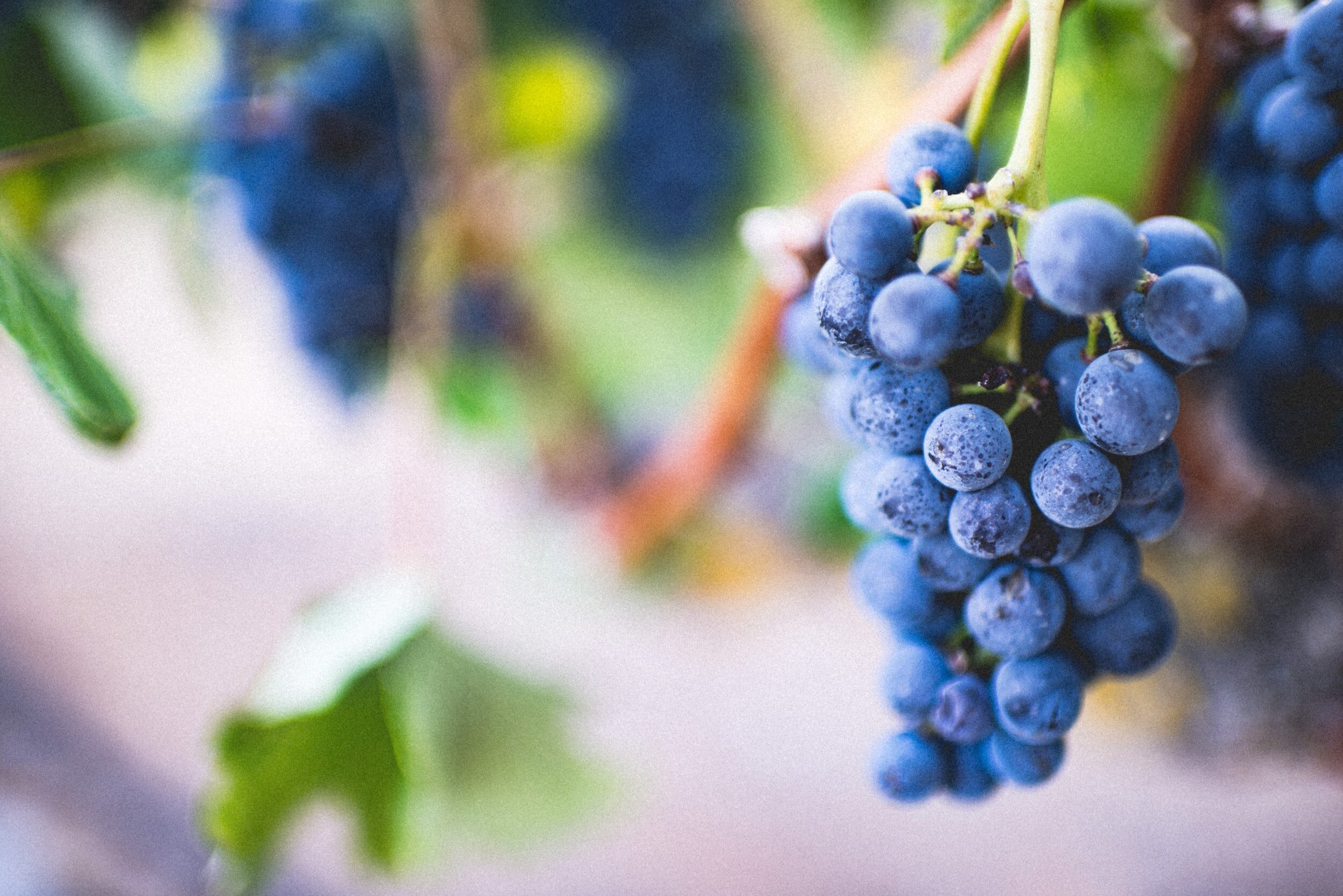
Vintage Port is made from grapes grown in a single year. Non-vintage Port is a blend of wines from grapes grown over many different years.
Most Ports are non-vintage.
Very few Ports are Vintage. Vintage Port is only made in the best growing years. This is why Vintage Ports are so special.
Vintage Port is produced from grapes harvested in a single exceptional year, known as a “declared vintage.”
The decision to declare a vintage is made by the individual Port houses (producers) when the quality of the grapes and resulting wine meet specific standards.
These young wines actually go through a tasting panel to verify they’re up to snuff.
Vintage ports are typically made in limited quantities, and they undergo a relatively short period of aging in barrels before being bottled.
These wines are known for their rich, concentrated flavors, robust structure, and significant aging potential.
Non-vintage Port is a blend of wines from multiple years.
Almost all Port wines are non-vintage.
The goal of non-vintage port is to achieve a consistent style and flavor profile year after year. As a wine drinker, I want my average Port wine to taste the same each time I buy it (think of it as a house style).
Non-vintage ports are aged for a shorter period in large oak barrels, allowing the wines to retain their youthful, fruity characteristics.
Non-vintage Port wines are typically ready to drink upon release and do not require extensive aging.
Is Vintage Port Wine the Same as Tawny Port?
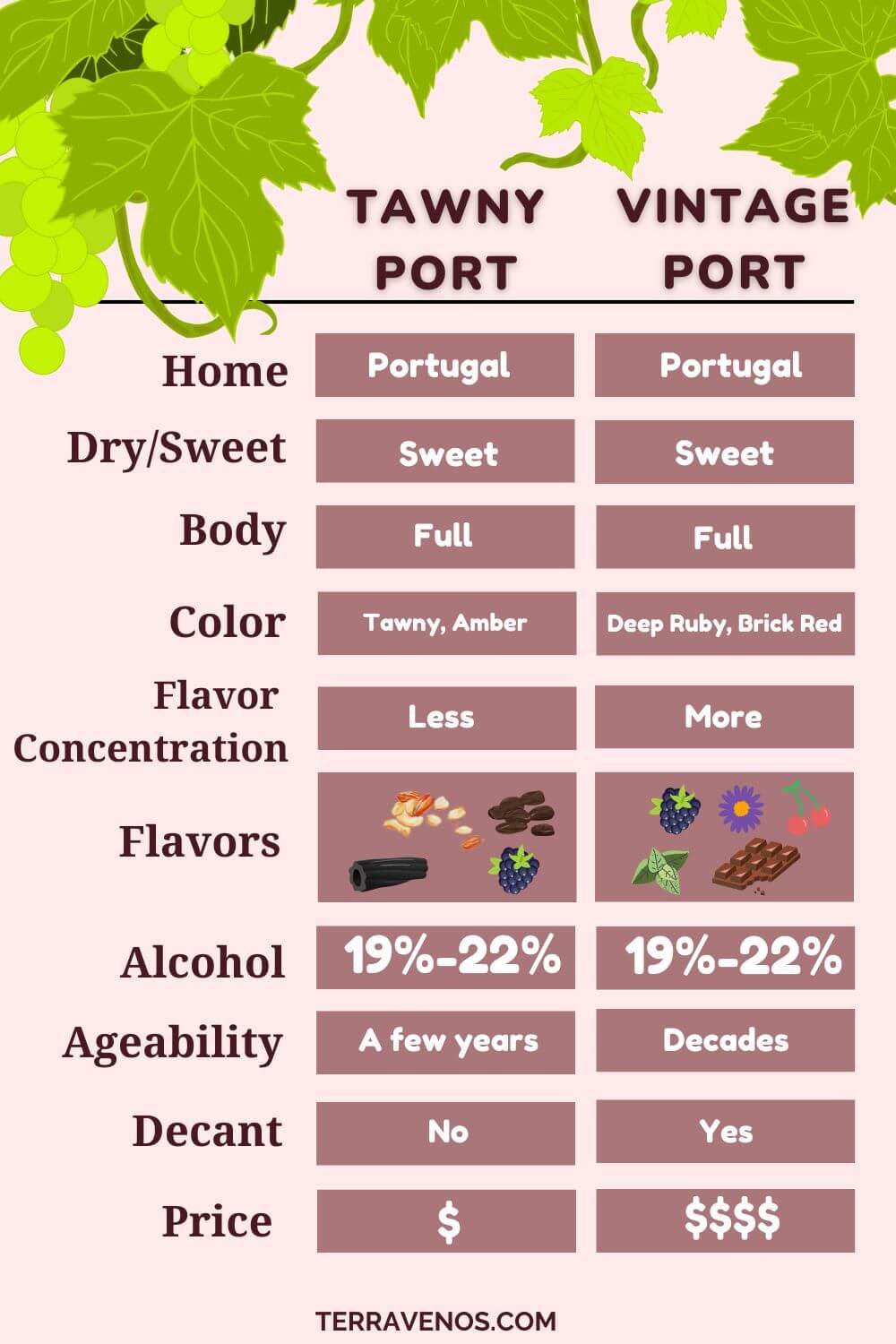
Vintage Port and Tawny Port are different styles of Port wine. Vintage Port is made from grapes harvested in a single exceptional year and is known for its powerful, concentrated flavors and ability to age.
Tawny Port is always a blend of multiple vintages and is aged in wooden barrels, resulting in a mellow, nutty flavor profile.
Tawny Port has a brownish-tawny, more amber than red color thanks to this aging regimen.
Helpful Tip: Check out this comprehensive post on how Port wines are made (and the many different styles).
Is Tawny or Vintage Port Better?
Qualitatively, Vintage Ports are better than Tawny Ports (especially inexpensive Tawnies). Vintage Ports will express concentrated flavors that Tawny Ports cannot mirror.
Stylistically, Tawny Ports have a distinctive flavor profile from Vintage Port. Expect your Tawnies to have a nutty, caramelized profile, with a lighter body. Vintage Ports have concentration and depth (thanks to that amazing growing season and the use of only the best grapes).
Basic Tawny Ports are inexpensive and made to be enjoyed as soon as you buy them. But, there are aged Tawny Ports, too. These are higher quality, but still accessible for most wine budgets.
Helpful Tip: Here’s a complete overview of the different styles of Tawny Port. (Full disclaimer: Tawny Ports are my favorite style of Port)
While both Tawny Port and Vintage Port have their unique charms, Vintage Port is the pinnacle of Port wines thanks to its exceptional quality and aging potential.
Is Vintage Port Drinkable?
Absolutely! Vintage Port is not only drinkable but also highly enjoyable. While it can be appreciated in its youth, the true potential of vintage port comes with age.
Helpful Tip: Vintage Ports are typically released when they’re young and vibrant, making them approachable to drink immediately, but waiting is often better.
The intense fruit flavors, robust structure, and balanced sweetness of a young Vintage Port make it a delightful choice for those seeking a rich and powerful wine experience.
That being said, Vintage Port has tremendous aging potential, often improving in complexity and character over time.
If you have the patience and desire to experience the evolution of a wine, allowing a bottle of Vintage Port to age for several years or even decades can be a truly rewarding experience.
The flavors mellow out and harmonize, the tannins become more integrated, and layers of secondary aromas and flavors emerge.
Whether you choose to enjoy it young or cellar it for the future, Vintage Port is a highly drinkable wine that offers immense pleasure and satisfaction.
What Year Is Good for a Vintage Port?
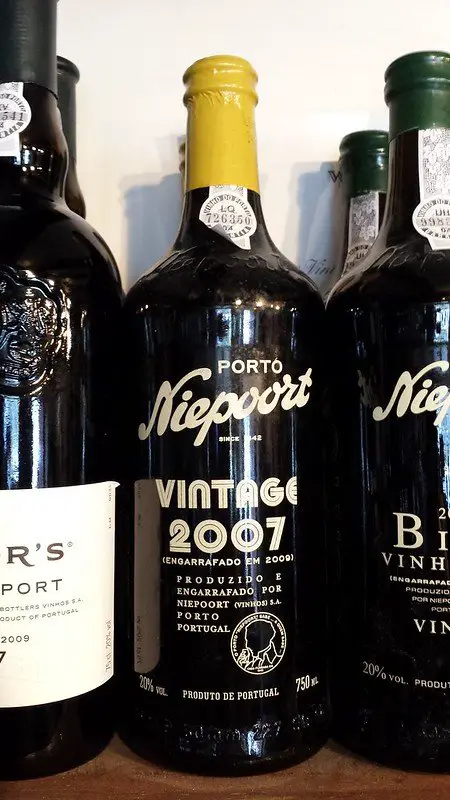
Some of the best years for Vintage Port include 2016, 2011, and 2007.
It is important to note that vintage port years are declared by each producer individually, so the quality may vary between different estates. When it comes to vintage port, certain years stand out as exceptional. Vintage port years are determined by the quality of the grapes harvested in a specific year.
These years produced wines with remarkable structure, complexity, and aging potential.
If you’re looking to invest in a bottle of Vintage Port or simply enjoy a top-notch experience, consider exploring the exceptional vintages when many estates declare a vintage year.
Does Vintage Port Get Better with Age?
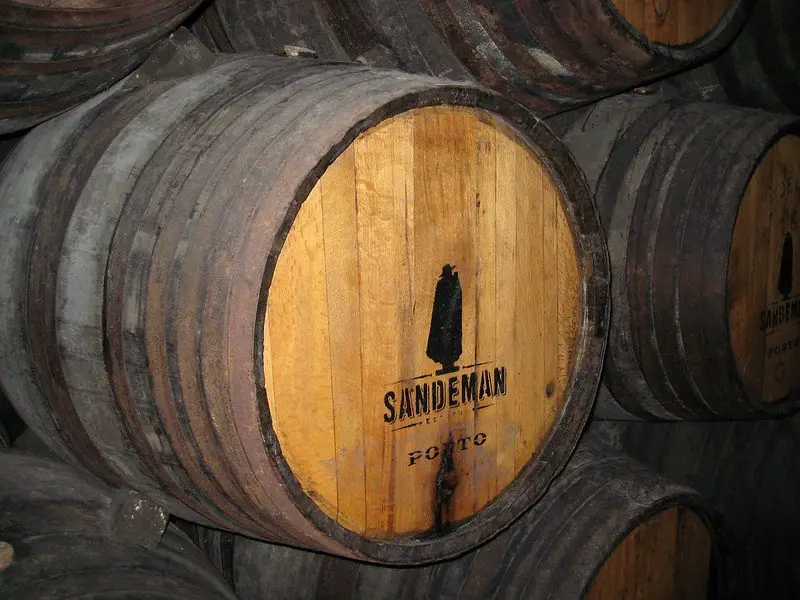
Vintage Port is one of the very few wines that get better with age. While Vintage Port is delicious when young, it truly shines after several years, even decades, of aging.
As Vintage Port matures in the bottle, the flavors become more refined and complex.
The intense fruitiness of its youth gradually transforms into a harmonious symphony of rich dark fruit, chocolate, spices, and hints of tobacco.
With time, the tannins soften and integrate, creating a smooth and velvety texture. Vintage port is an excellent choice for collectors or those who appreciate the depth and evolution that aging brings to a wine.
Why Is Vintage Port So Expensive?
The price of Vintage Port can often be attributed to several factors. First and foremost, Vintage Port production is highly dependent on the quality of the grapes harvested in a specific year. Years with exceptional grape quality and ideal weather conditions for ripening are rare, which limits production (supply).
Additionally, vintage port requires extensive aging in oak barrels and further maturation in the bottle before release, which increases production costs.
Furthermore, the reputation and heritage of the producer play a role in the pricing. Well-established estates with a track record of producing exceptional Vintage Ports can command higher prices due to their prestige and demand.
Ultimately, the rarity, craftsmanship, and aging potential of vintage port contribute to its higher price point. But they’re worth it!
Does Vintage Port Need to Breathe?
Vintage Port, like many fine wines, benefits from aeration to fully express its flavors and aromas. When you open a bottle of vintage port, let it breathe for a short period before enjoying it.
Helpful Tip: It’s best to let Vintage Port breathe for about 30 minutes to an hour before serving.
Pouring the wine into a decanter or swirling it in the glass helps to oxygenate the wine, allowing its complex bouquet to unfold.
Here’s a classic decanter style you can use for Port wines (or any other red wine):
Aeration softens the wine’s tannins and allows the flavors to become more expressive. However, unlike some lighter wines, Vintage Port doesn’t require extensive decanting or prolonged exposure to air.
Should Vintage Port be Decanted?
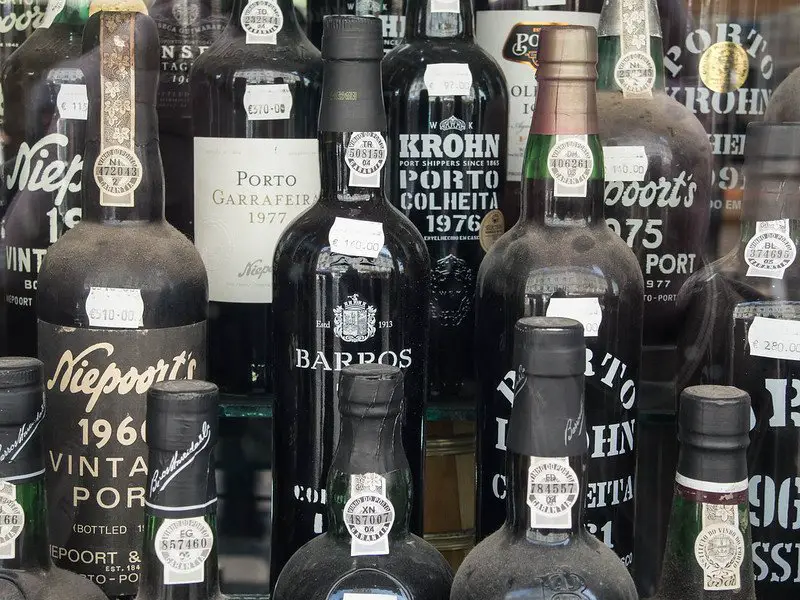
Decanting Vintage Ports can be beneficial, especially for older vintages that may have accumulated sediment over time.
When decanting Vintage Port, handle the bottle with care to avoid disturbing the sediment.
Stand the bottle upright for a few hours before opening it to allow the sediment to settle at the bottom.
Then, slowly pour the wine into a decanter, leaving the sediment behind in the bottle.
Decanting helps separate the wine from any undesirable particles and allows it to breathe, revealing its full range of flavors and aromas.
While vintage port typically benefits from aeration to allow its flavors and aromas to open up, decanting isn’t always necessary.
Unlike younger, tannic wines, Vintage Port has already undergone significant aging in barrels and bottles before release.
If you prefer a smoother texture and want to showcase the wine’s complexity, decanting can be a worthwhile step for your full Vintage Port experience.
Plus, decanters are sexy.
What Color Should Vintage Port Be?
Young Vintage Port is deep, opaque ruby. Old Vintage Port is tawny or brick-like in color. The change in color is a natural part of the aging process for all red wines, including Vintage Port.
As your Port wine matures and gains complexity, the pigments in the wine interact with oxygen and other compounds, resulting in a gradual transformation.
Helpful Tip: Port wines are always a blend of different grapes. Each producer uses their own blend. The color of Vintage Port can vary between different vintages and producers. Some may retain their intense purple hues even after extended aging, while others may develop a more pronounced tawny tone.
- If you have a young Vintage Port, expect it to be a deep ruby. You shouldn’t be able to see the stem of your wine glass.
- If you have an older Vintage Port, expect it to be a brownish color, or have an orange rim. You may start to see the stem through the glass.
How Long Will Vintage Port Keep?

Vintage Port will easily keep for 30 years thanks to its robust structure, high sugar content, and high alcohol.
In fact, many Port lovers consider Vintage Port to be at its peak after 20 or 30 years of cellaring.
Note: aging potential can vary depending on the vintage year, producer, and storage conditions. Some exceptional vintages have the potential to last for decades, while others may mature sooner.
If you’re considering investing in Vintage Port for cellaring, then you’ll want to consult an expert or trusted source to figure out what the aging potential is for a given producer and vintage year before purchasing.
Should Vintage Port be Stored on its Side?

Unlike traditional still wines, Vintage Port doesn’t necessarily need to be stored on its side. Port’s high alcohol content thanks to the fortification process makes it less susceptible to cork drying and oxidation.
Vintage ports are often bottled with long corks that provide an airtight seal, protecting the wine from excessive contact with air.
The wine producer expects these wines to sit for years.
Whether you decide to store your Vintage Port upright or on its side will not significantly impact its quality or aging potential.
However, if you have a wine fridge and want to keep your Port stored on its side for consistency, that works, too.
Can You Drink 50-Year-Old Port?
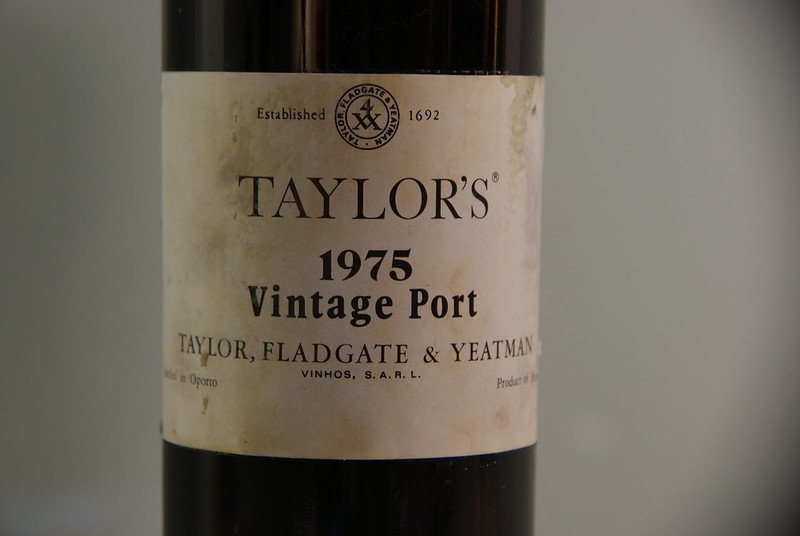
You can drink 50-year-old Port. Vintage Ports have considerable aging potential and can develop layered fruit complexity over time.
50-year-old Port wines will mature with tertiary aromas and flavors like dried red and black fruit, nuts, leather, and warm spice.
However, if you’re planning on cellaring a Vintage Port to enjoy in 50 years, then you’ll want to make sure it’s stored properly.
Keep your Port wine in a cool, dark, and humid environment to prevent premature aging or deterioration.
When handled and stored correctly, a 50-year-old port can offer an extraordinary drinking experience, showcasing the rewards of patience and time.
How Do You Drink Vintage Port?

Drinking Vintage Port involves ritual that enhances the enjoyment of this fortified wine.
Here are some tips to drink Vintage Port:
- Decanting: Consider decanting the vintage port to allow it to breathe and reveal its complex aromas. Pour the wine slowly into a decanter, avoiding the sediment at the bottom of the bottle. Let it rest for 30 minutes to an hour before serving.
- Glassware: Choose a suitable glass with a wide bowl to capture the aromas and concentrate the flavors. A tulip-shaped glass or a specific port wine glass is ideal for enhancing the wine’s bouquet.
- Serving Temperature: Vintage port is best served slightly below room temperature, around 16-18°C (60-64°F). This temperature range allows the wine’s aromas and flavors to shine without being overly warm or chilled.
- Sipping and Savoring: Take small sips. Let the wine linger and play on your tongue. Notice the layers of flavors, the balance between sweetness and tannin, and the wine’s silky texture. Pay attention to the flavors after you swallow your wine. Vintage Port’s long, intense finish is one of its distinguishing features.
- Food Pairings: Vintage port pairs wonderfully with various foods, especially those with rich flavors. Indulge in combinations like dark chocolate, aged cheeses, salted and roasted nuts, dried fruits, and even savory dishes like roasted meats or game. The wine’s smooth texture, heady sweetness, and rich body offer a range of delicious pairing possibilities.
Helpful Tip: Here’s a post that covers exactly what Port glasses you’ll want to use.
Does Vintage Port Go Up in Value?
Vintage Port can go up in value. Certain vintages from celebrated producers can appreciate over time. That said, it’s important to value your Vintage Port first as a wine enthusiast, and second as a wine investor. The value of a particular Vintage Port can be affected by different factors, including: critical acclaim, vintage year, producer, and rarity.
The Port market is tightly controlled with set quotas of how much wine a producer can make in a given year. This regulates supply and demand and ultimately affects price. While some Vintage Ports may increase in value, wine investments are notoriously unpredictable.
If you’re interested in investing in Vintage Ports, work with a professional service.
What Goes Best with Vintage Port?

Vintage Port’s luscious sweet kiss and bold flavors make it a versatile wine for pairing with various foods.
Here are some fantastic options to enrich your Vintage Port experience:
- Dark Chocolate: The rich, complex flavors of Vintage Port complement the bitter intensity of dark chocolate. Indulge in a pairing of a high-quality dark chocolate bar or truffles with a glass of vintage port for a hedonistic treat.
- Aged Cheeses: Vintage Port harmonizes with an array of cheeses. Opt for strong, full-flavored cheeses like Stilton, Roquefort, or Gorgonzola. The sweet/savory/salty interplay between the Port and the cheese creates wow-worthy contrast.
- Nuts and Dried Fruits: Salted nuts are perhaps one of the oldest Port pairings. Dried fruits will mirror the dried fruit flavors in your wine. Enjoy a handful of roasted almonds, walnuts, or pistachios alongside dried figs, dates, or cherries to enhance the wine’s complexity.
- Roasted Meats: Vintage Port’s robust character can stand up to rich, flavorful roasted meats. Pair it with roast beef, lamb, or game. The rustic quality in these earthy dishes play counterpoint to the wine.
- Cigars: For those who enjoy cigars, Vintage Port is a classic pairing partner. I’m not a cigar person, but from just from smelling humidors, you can tell that these two belong together. The depth and sweetness of the wine pull out spice and earth from the tobacco.
Personal Tip: Dark chocolate and Port is one of my all-time favorite wine pairings.
Does Vintage Port Improve in the Bottle?
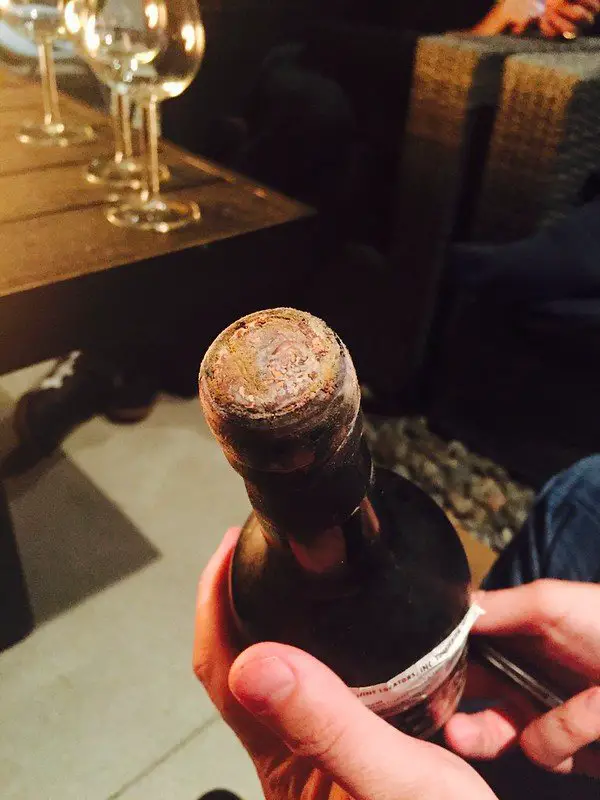
Vintage Port is one of the few wines that will improve in bottle. The flavors and aromas of Vintage Port become more refined and integrated with time. Intense, young fruit will transform into dried fruit and floral notes, and develop complex notes of spice, chocolate, tobacco, and leather.
It takes many years, even decades, for Vintage Port to fully mature.
With time, the wine’s tannins soften and mellow, resulting in a smoother and more harmonious texture. Aging helps balance the wine.
Helpful Tip: Vintage Ports won’t improve indefinitely. Every vintage and bottle has an optimal drinking window. If you invest in a Vintage Port, find out what the expects say on when you should enjoy your bottle. Here’s an example of a Vintage Port Chart that will help. (external link)
Final Thoughts – How to Drink Vintage Port
Ultimately, whether you choose to enjoy Vintage Port as a youthful, intense, vibrant wine, or a smoothly aged goddess is a matter of personal preference.
Some wine enthusiasts appreciate the energy and vigor of young Vintage Port, while others will sip and savor the complexity and elegance that come with age.
- Remember to consult a Vintage Port chart if you’re considering holding your wine for decades. Every Vintage Port will have an optimal drinking window.
- Thinking about investing in Vintage Port? You’ll want to work with a professional to consult with on options and opportunities.
- Never tried a Vintage Port before? Start with a Single Quinta Vintage. These are exceptional wines at a more affordable price point and will give you a similar taste experience.
Vintage Port wines embody extraordinary quality and character. Whether you choose to enjoy it upon release or cellar it for future indulgence, you’re in for a unique and unforgettable tasting experience.
Thirsty for More?

Here’s a rundown of what wine glasses you should be using when drinking Port wines (and also creative substitutes if you don’t have a full wine bar).
Here’s a quick rundown on Port Wine Frequently Asked Questions if you’re still just getting started with Port.
Who doesn’t love fortified wines? There are so many wines to try. Fortified wines are relatively uncommon for most average wine drinkers, so I put together this post that goes into more detail on the differences between fortified and unfortified wines.
Here’s a post that explores 10 different types of fortified wines you may want to check out.
You may be interested in this post on how to pick out a good fortified wine.

